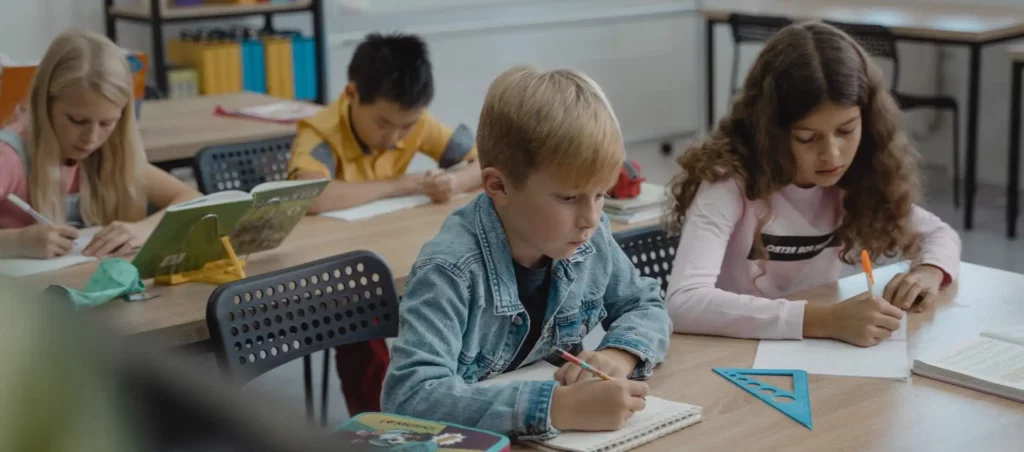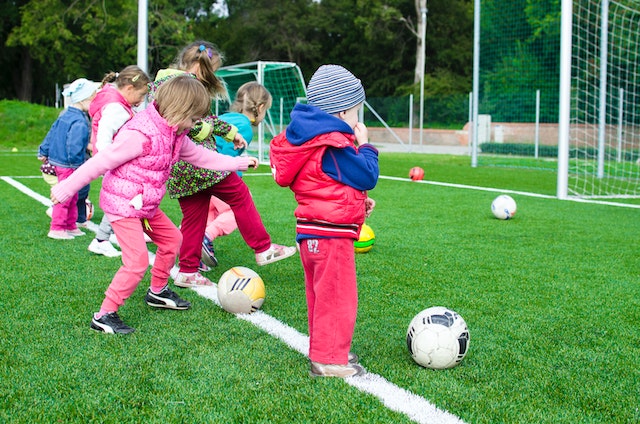
After a rigorous process that began in February, Alta Pediatrics is now a New Jersey Department of Education Certified Agency and Clinic. This designation will expand our ability to provide services to Public, Private, and Charter schools throughout the state of New Jersey.
The NJ DOE Certification designation authorizes a clinic or agency to contract directly with Public and Private schools. This ensures that all agencies providing services to schools meet a certain set of standards in how treatment is administered, communicated, and documented. Our agency submitted an application with all requested legal and other associated documents. Once the review was completed all designated staff members were required to pass a Criminal Background Check as a final step in the process.
The NJDOE Certification process is overseen by the Office of Special Education. "The Office of Special Education has a responsibility under federal statute and regulations to operate a system of general supervision that monitors the implementation of the Individuals with Disabilities Education Act of 2004 (IDEA) by local education agencies (LEAs). The system is accountable for enforcing the requirements and for ensuring continuous improvement. The office supports the mission of the Department by providing leadership in establishing standards which promote improved outcomes for students with disabilities, as well as by ensuring consistency in the procedures that public agencies implement for meeting compliance with state and federal regulations."
We are authorized to provide Occupational Therapy and Speech Therapy services. These can be delivered either as on-demand Evaluation Services or on an on-going annual basis.
In addition to contracting directly with school district we also work with many preschools, daycares, community organizations, and ABA centers in the area. For more in-depth information on in-school therapy services you can view the dedicated page on our website.

The morning rush before school can be a stressful time for both parents and children. However, with a well-structured morning routine and some guidance, you can help your child become more independent in getting ready for school. In this blog post, we will explore tips and strategies to create a structured school morning routine that fosters independence in your child and sets a positive tone for the rest of the day.
Consistency is key when it comes to establishing a morning routine. Set a specific wake-up time for your child and stick to it every day, even on weekends. A regular wake-up time helps regulate their body clock and ensures they get enough rest.
The evening before is the perfect time to prepare for a smooth morning. Have your child lay out their clothes, pack their school bag, and double-check that homework and necessary supplies are ready. This step eliminates last-minute scrambles and helps your child take responsibility for their belongings.
Visual schedules are a great way to make the morning routine more manageable for your child, especially if they are younger. Use pictures or drawings to represent each step of the routine, from waking up to leaving for school. Hang it in a visible place so your child can follow along.
A checklist helps your child stay organized and ensures they don't forget anything important. Include tasks such as brushing teeth, washing face, getting dressed, and eating breakfast. Encourage your child to check off each task as they complete it, providing a sense of accomplishment.
As your child grows, encourage them to take on more responsibility. Allow them to choose their outfits, make their breakfast (with supervision, if needed), and pack their lunch. Gradually, your child will become more self-sufficient and confident in their morning routine.
Timers or alarms can help keep the morning routine on track. Set alarms for specific tasks, such as when it's time to stop playing and start getting ready, or when it's time to leave for the bus stop. This visual and auditory cue can help your child transition smoothly between activities.
Praise and positive reinforcement go a long way in motivating your child to be independent. Celebrate their successes, no matter how small, and acknowledge their efforts. A simple "Great job getting dressed by yourself!" can boost their confidence and motivation.
Mornings can be unpredictable, and not every day will go smoothly. Be patient and understanding when setbacks occur. Encourage problem-solving and teach your child that it's okay to make mistakes as long as they learn from them.
Children often learn by observing their parents. If you maintain a calm and organized morning routine, your child is more likely to do the same. Show them how to manage time effectively and prioritize tasks.
Finally, make mornings enjoyable for your child. Incorporate a fun activity or special treat into the routine to give them something to look forward to. This can be as simple as sharing a quick joke, reading a short story, or listening to their favorite song together.
A structured school morning routine not only helps your child get ready for school but also teaches them valuable life skills and fosters independence. By following these tips, you can create a positive and empowering morning routine that sets the tone for a successful day of learning and growth. Remember that consistency, patience, and positivity are key ingredients in helping your child become more self-sufficient in their morning routine.
Childhood development is a remarkable journey filled with a series of important milestones that pave the way for physical, cognitive, and emotional growth. Two significant categories of development are fine and gross motor skills, which play a crucial role in a child's ability to interact with their environment and learn essential life skills. However, some children may face challenges in achieving these milestones due to sensory processing difficulties. In this article, we explore the significance of fine and gross motor skill milestones and how sensory processing challenges can impact a child's developmental journey.
Fine Motor Skills

Fine motor skills involve the coordination of small muscles, predominantly in the hands and fingers, to perform precise tasks. These skills are essential for self-care activities, such as dressing and feeding, as well as academic tasks like writing and drawing. Here are some common fine motor milestones children typically achieve:
Grasping: Infants begin to grasp objects reflexively, and by three to six months, they start to voluntarily reach and grab objects.
Pincer Grasp: Around 9-12 months, a child typically develops the ability to use their thumb and index finger to pick up small items.
Scribbling: Between 12-18 months, children may start making random marks on paper using crayons or pencils.
Self-Feeding: By 18-24 months, children can often hold a spoon or fork and feed themselves.
Precision Cutting: Around 4-5 years, children may exhibit the ability to use scissors and cut along lines.
Gross Motor Skills

Gross motor skills involve the coordination of larger muscle groups and are essential for activities that require whole-body movements. These skills form the foundation for physical activities such as running, jumping, and balancing. Here are some typical gross motor milestones:
Rolling Over: Infants usually begin rolling over from front to back and vice versa around 4-6 months.
Crawling: Between 6-10 months, babies may begin crawling on their hands and knees or using alternative methods like scooting.
Walking: Most children start furniture walking by 12-15 months and walking independently by 18 months, though this age range can vary widely.
Jumping: Around 2-3 years, children typically learn to jump with both feet off the ground.
Riding a Bike: By 4-6 years, many children can ride a tricycle or a bike with training wheels.
Impact of Sensory Processing Challenges
Sensory processing refers to how the nervous system receives and interprets information from the senses: touch, taste, smell, sight, sound, and movement. Some children may have sensory processing challenges, where their brains have difficulty organizing and responding to this sensory input effectively. These challenges can significantly impact fine and gross motor skill development.
Fine Motor Challenges: Children with sensory processing difficulties may struggle with tasks that require precise hand-eye coordination. For instance, they may find it challenging to hold a pencil correctly, leading to messy handwriting. Difficulties with self-feeding can also arise due to aversions to certain textures or tastes. Children may become frustrated or avoid tasks that involve fine motor skills.
Gross Motor Challenges: Sensory processing challenges can also affect a child's gross motor skills. They might struggle with balance and coordination, making activities like running or climbing more challenging. Difficulty processing movement and spatial awareness can lead to avoiding physical play, impacting their overall physical development.
Emotional Regulation: Sensory processing challenges can also affect a child's emotional regulation. Overstimulation from sensory input may lead to meltdowns or emotional outbursts. Conversely, some children may seek sensory input to calm themselves, leading to impulsive or unsafe behaviors.
Addressing Sensory Processing Challenges
Early identification and intervention are crucial for children facing sensory processing challenges. Occupational therapists are professionals trained to work with children to improve their sensory processing abilities and fine and gross motor skills. Through specialized activities and therapies, they can help children regulate their responses to sensory input, enhance their motor skills, and build confidence in their abilities.
Parents and educators can also play an active role in supporting children with sensory processing challenges. Providing a structured environment, minimizing distractions, and offering sensory-friendly tools can create a more comfortable space for children to explore and develop their motor skills.
Activities that help children regulate responses to sensory input and enhance motor skills can be beneficial for their overall development and well-being. These activities aim to create a sensory-friendly environment while providing opportunities for children to engage their sensory systems in a controlled and structured manner. Here are some examples of such activities:
Sensory Bins: Create sensory bins filled with different textures like rice, beans, sand, or water. Encourage children to explore and manipulate the materials with their hands, promoting fine motor skills and sensory integration.
Calm Down Corner: Designate a quiet space where children can go to self-regulate when feeling overwhelmed. Offer sensory tools like stress balls, fidget toys, or weighted blankets to provide comfort and relaxation.
Body Brushes: Use soft body brushes to provide deep pressure touch to children's arms, legs, and back. This can help with sensory processing and body awareness.
Music and Movement: Play calming or upbeat music and encourage children to move their bodies to the rhythm. Dancing, marching, or doing yoga poses can improve gross motor skills and self-expression.
Obstacle Courses: Set up indoor or outdoor obstacle courses that incorporate a variety of sensory experiences, such as crawling through tunnels, jumping over pillows, or balancing on beams.
Bubble Play: Blow bubbles and encourage children to pop them using their fingers or catch them in the air. This activity enhances visual tracking, hand-eye coordination, and finger dexterity.
Play with Theraputty or Silly Putty: Theraputty or Silly Putty can be used to strengthen hand muscles and improve fine motor skills. Children can squeeze, pinch, and stretch the putty in various ways.
Sensory Walks: Take children on nature walks and encourage them to touch, smell, and observe different natural elements like leaves, flowers, and rocks.
Trampoline Activities: Jumping on a trampoline can provide proprioceptive input and improve overall body coordination and balance.
Tactile Play: Set up play stations with materials like finger paints, shaving cream, or kinetic sand, allowing children to explore and create with their hands.
It's essential to tailor these activities to the child's individual needs and preferences. Always observe their responses and adjust the level of sensory input accordingly. For children with sensory processing challenges, consistency and repetition in these activities can be particularly beneficial as they become more comfortable with sensory stimuli over time. If needed, consulting with an occupational therapist can help identify specific activities that align with a child's sensory processing profile and motor skill goals.
Conclusion
Fine and gross motor skills are fundamental building blocks in a child's development, enabling them to interact with their environment and learn new skills. However, some children may encounter challenges in achieving these milestones due to sensory processing difficulties. Recognizing and addressing these challenges early on can significantly impact a child's developmental journey, allowing them to reach their full potential and thrive in various aspects of life. With proper support and intervention, children can overcome sensory processing challenges and flourish in their physical and emotional growth.
Summer is the perfect time to engage your children in activities that not only provide entertainment but also promote their overall development. As a pediatric occupational therapist, I understand the importance of targeting various areas of a child's development, such as gross motor skills, fine motor skills, sensory processing, emotional regulation, and social skills. In this article, I will share expert advice and suggest summer activities that can help enhance these crucial areas of your child's growth while ensuring an enjoyable and memorable summer for the whole family.

Gross motor skills involve the coordination and control of large muscle groups, promoting physical strength, balance, and coordination. Here are some summer activities to boost gross motor skills:
Fine motor skills involve the coordination and control of small muscles, particularly in the hands and fingers. They are essential for tasks such as writing, cutting, and self-care activities. Here are some summer activities to improve fine motor skills:
Sensory processing refers to how our nervous system receives, interprets, and responds to sensory information. Engaging in sensory activities can help children regulate their sensory responses. Here are some summer sensory activities:
Emotional regulation involves understanding and managing emotions effectively. Summer activities can help children develop emotional resilience and self-regulation skills. Here are some suggestions:
Summer activities provide ample opportunities for children to interact with others and enhance their social skills. Here are a few suggestions:
Stay Cool and Hydrated!
While you are out there in the summer heat it is important to stay cool and hydrated. Lois Manzella Marchitto, the owner of Fitness Knocking, which provides in-home personal training in NJ, provides some easy ways to stay hydrated while being active. In addition to drinking water there are also foods like watermelons, oranges, and even zucchinis can help us stay hydrated during summer activities.
Engaging your children in summer activities that target gross motor skills, fine motor skills, sensory processing, emotional regulation, and social skills is a wonderful way to promote their holistic development. By incorporating these suggested activities, you can make the most of the summer season while helping your child grow and thrive. Remember to adapt the activities based on your child's age, abilities, and interests. Have a fantastic summer filled with fun, growth, and cherished memories!
Some children, young people and adults find the information that they receive through their senses challenging. Things like hearing, touch, vision, taste and smell are our commonly known senses. In addition to these, there are three other less known senses that also play a big part in and how we and our bodies engage and respond to the world around us. These are Proprioception, a sense of body awareness; Vestibular, which involves movement, balance and coordination; and Interoception which helps us understand and feel what’s happening inside our body.
The idea behind a sensory diet is that by providing children with the right types and amounts of sensory input, they can regulate their sensory systems more effectively, leading to better behavior, attention, and overall functioning. This can be especially helpful for children with sensory processing difficulties, ADHD, autism, and other developmental or neurological conditions.
We developed this guide to help parents, caregivers, and members of the community better understand sensory profiles and home activities you can use to develop a sensory diet.

We’d like to welcome our newest team member, Michelle Gold! Michelle is joining us as a Patient Care Coordinator to help assist both new and existing patients with onboarding, scheduling, and insurance billing.
Michelle brings many years of experience in medical administration having worked previously for Atlantic Health Systems and Vanguard Medical Group. She is also a Licensed Practical Nurse (LPN), which allows her to bring direct clinical experience to the administrative function.
Michelle is a local resident and mom in Scotch Plains where she resides with her husband, and her two children. We are very excited to have Michelle onboard!
Occupational therapy is a form of therapy that focuses on the ability of a person to engage in meaningful activities or occupations. In the context of autism, occupational therapy can play an important role in helping individuals with autism to develop and improve their functional abilities, social skills, and independence.
This blog article will provide an overview of the role of occupational therapy in the treatment of autism. It will cover the following topics:
Autism, also known as Autism Spectrum Disorder (ASD), is a developmental disorder that affects social interaction, communication, and behavior. Individuals with autism often have difficulty in communicating and forming social relationships, as well as in understanding and responding to social cues. They may also exhibit repetitive behaviors, restricted interests, and sensory sensitivities.
Occupational Therapy:
Occupational therapy is a form of therapy that focuses on helping individuals to participate in activities that are meaningful and important to them. This can include activities of daily living (ADLs) such as dressing, grooming, and feeding oneself, as well as activities related to work, leisure, and social participation.
Occupational therapists work with individuals to develop skills, adapt to their environment, and use assistive technology to support their engagement in activities. They also address underlying sensory, motor, and cognitive issues that may be impacting an individual's ability to engage in activities.
The Role of Occupational Therapy in Autism Treatment:
Occupational therapy can play an important role in the treatment of autism. The primary goal of occupational therapy in autism treatment is to promote the development of skills that enable individuals to engage in daily activities, participate in social interactions, and achieve greater independence.
Occupational therapists work with individuals with autism to identify their strengths and challenges, and to develop individualized treatment plans that address their specific needs. They may also work with family members and caregivers to help them support the individual's progress.
The goals of occupational therapy in autism treatment may vary depending on the needs of the individual. Some common goals may include:
Occupational therapy techniques for autism may include a variety of approaches depending on the needs of the individual. Some common techniques may include:
Advocating for your child in educational and community settings can be a daunting task. It can be especially challenging for parents of children with sensory processing disorders (SPD), as these children may face unique challenges in school and other environments. However, advocating for your child and promoting inclusion for children with SPD is essential to ensure that they receive the support they need to thrive.

Here are some tips to help you become an effective advocate for your child:
Advocating for your child with SPD can be challenging, but it's essential to ensure that they receive the support and accommodations they need to succeed. By building a strong support team, communicating with your child's school, advocating for inclusive environments, and practicing self-care, you can become an effective advocate for your child and promote inclusion for children with SPD in your community.
There are several home exercises and activities that you can do with your child to help them improve their sensory processing skills.

In this blog post, we will discuss some of the best exercises and activities for children with sensory processing disorders.
In conclusion, children with SPD can benefit from a range of home exercises and activities that can help to improve their sensory processing skills
Autism Spectrum Disorder (ASD) is a neurodevelopmental disorder that affects communication, social interaction, and behavior. It is estimated that 1 in 54 children in the United States has ASD, and early intervention is crucial for helping these children reach their full potential. In this blog post, we will discuss the importance of early intervention for children with autism.

Early intervention refers to the support and services provided to children with developmental delays or disabilities and their families. In the context of autism, early intervention refers to a range of services and therapies provided to children with autism in their early years (typically from birth to three years of age). Early intervention aims to address developmental delays, build skills, and reduce symptoms of autism.
Research has shown that early intervention is critical for improving outcomes for children with autism. Early intervention can help children with autism improve their social communication skills, develop better relationships with others, and reduce the severity of their symptoms. Here are some specific reasons why early intervention is so important for children with autism:
There are several types of early intervention services that can benefit children with autism. These include:
Parents play a critical role in early intervention for children with autism. As a parent, it's important to be aware of the early signs of autism and seek an evaluation if you suspect your child may be at risk. The earlier autism is diagnosed, the sooner your child can begin receiving early intervention services.
1801 E 2nd St.
Scotch Plains, NJ 07076
Serving Westfield, Cranford, Berkeley Heights, Watchung, New Providence, and Summit